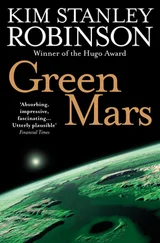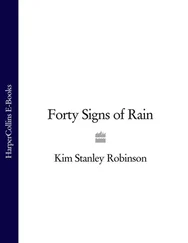THE COMPLETE MARS TRILOGY
Red Mars
Green Mars
Blue Mars
Kim Stanley Robinson

 Copyright
Copyright
This novel is entirely a work of fiction. The names, characters and incidents portrayed in it are the work of the author’s imagination. Any resemblance to actual persons, living or dead, events or localities is entirely coincidental.
Harper Voyager
An imprint of HarperCollins Publishers Ltd.
1 London Bridge Street
London SE1 9GF
www.harpercollins.co.uk
Red Mars
Previously published in paperback by HarperCollins Science Fiction & Fantasy 1993
Published in paperback by Harper Voyager 1996
First published in Great Britain by HarperCollins Publishers 1992
Cover layout design © HarperCollins Publishers Ltd 2009
Copyright © Kim Stanley Robinson 1992
Green Mars
Previously published in paperback by HarperCollins Science Fiction & Fantasy 1994
Published in paperback by Harper Voyager 1996
First published in Great Britain by HarperCollins Publishers 1992
Cover layout design © HarperCollins Publishers Ltd 2009
Copyright © Kim Stanley Robinson 1994
Blue Mars
Previously published in paperback by Voyager 1996
First published in Great Britain by Harper Voyager 1996
Cover layout design © HarperCollins Publishers Ltd 2009
Copyright © Kim Stanley Robinson 1996
Cover Photographs © Kees Veenenbos/Science Photo Library
Kim Stanley Robinson asserts the moral right to be identified as the author of this work
A catalogue copy of this book is available from the British Library
All rights reserved under International and Pan-American Copyright Conventions. By payment of the required fees, you have been granted the non-exclusive, non-transferable right to access and read the text of this ebook on screen. No part of this text may be reproduced, transmitted, down-loaded, decompiled, reverse engineered, or stored in or introduced into any information storage and retrieval system, in any form or by any means, whether electronic or mechanical, now known or hereinafter invented, without the express written permission of HarperCollins ebooks
HarperCollins Publishers has made every reasonable effort to ensure that any picture content and written content in this ebook has been included or removed in accordance with the contractual and technological constraints in operation at the time of publication
Source ISBNs: 9780007401703, 9780007402090, 9780007402175
Ebook Edition © JULY 2015 ISBN: 9780008121778
Version: 2017-11-20
Contents
Cover
Title Page
Copyright
Red Mars
Title Page
Dedication
Part One: Festival Night
Part Two: The Voyage Out
Part Three: The Crucible
Part Four: Homesick
Part Five: Falling Into History
Part Six: Guns Under the Table
Part Seven: Senzeni Na
Part Eight: Shikata Ga Nai
Green Mars
Title Page
Dedication
Part One: Areoformation
Part Two: The Ambassador
Part Three: Long Runout
Part Four: The Scientist As Hero
Part Five: Homeless
Part Six: Tariqat
Part Seven: What Is To Be Done?
Part Eight: Social Engineering
Part Nine: The Spur of the Moment
Part Ten: Phase Change
Blue Mars
Title Page
Dedication
Part One: Peacock Mountain
Part Two: Areophany
Part Three: A New Constitution
Part Four: Green Earth
Part Five: Home at Last
Part Six: Ann in the Outback
Part Seven: Making Things Work
Part Eight: The Green and the White
Part Nine: Natural History
Part Ten: Werteswandel
Part Eleven: Viriditas
Part Twelve: It Goes So Fast
Part Thirteen: Experimental Procedures
Part Fourteen: Phoenix Lake
Keep Reading
About the Author
Also By Kim Stanley Robinson
About the Publisher
RED MARS
Kim Stanley Robinson
For Lisa
Mars was empty before we came. That’s not to say that nothing had ever happened. The planet had accreted, melted, roiled and cooled, leaving a surface scarred by enormous geological features: craters, canyons, volcanoes. But all of that happened in mineral unconsciousness, and unobserved. There were no witnesses – except for us, looking from the planet next door, and that only in the last moment of its long history. We are all the consciousness that Mars has ever had.
Now everybody knows the history of Mars in the human mind: how for all the generations of prehistory it was one of the chief lights in the sky, because of its redness and fluctuating intensity, and the way it stalled in its wandering course through the stars, and sometimes even reversed direction. It seemed to be saying something with all that. So perhaps it is not surprising that all the oldest names for Mars have a peculiar weight on the tongue – Nirgal, Mangala, Auqàkuh, Harmakhis – they sound as if they were even older than the ancient languages we find them in, as if they were fossil words from the Ice Age or before. Yes, for thousands of years Mars was a sacred power in human affairs; and its color made it a dangerous power, representing blood, anger, war and the heart.
Then the first telescopes gave us a closer look, and we saw the little orange disk, with its white poles and dark patches spreading and shrinking as the long seasons passed. No improvement in the technology of the telescope ever gave us much more than that; but the best Earthbound images gave Lowell enough blurs to inspire a story, the story we all know, of a dying world and a heroic people, desperately building canals to hold off the final deadly encroachment of the desert.
It was a great story. But then Mariner and Viking sent back their photos, and everything changed. Our knowledge of Mars expanded by magnitudes, we literally knew millions of times more about this planet than we had before. And there before us flew a new world, a world unsuspected.
It seemed, however, to be a world without life. People searched for signs of past or present Martian life, anything from microbes to the doomed canal-builders, or even alien visitors. As you know, no evidence for any of these has ever been found. And so stories have naturally blossomed to fill the gap, just as in Lowell’s time, or in Homer’s, or in the caves or on the savannah – stories of microfossils wrecked by our bio-organisms, of ruins found in dust storms and then lost forever, of Big Man and all his adventures, of the elusive little red people, always glimpsed out of the corner of the eye. And all of these tales are told in an attempt to give Mars life, or to bring it to life. Because we are still those animals who survived the Ice Age, and looked up at the night sky in wonder, and told stories. And Mars has never ceased to be what it was to us from our very beginning – a great sign, a great symbol, a great power.
And so we came here. It had been a power; now it became a place.
“… And sowe came here. But what they didn’t realize was that by the time we got to Mars, we would be so changed by the voyage out that nothing we had been told to do mattered anymore. It wasn’t like submarining or settling the Wild West – it was an entirely new experience, and as the flight of the Ares went on, the Earth finally became so distant that it was nothing but a blue star among all the others, its voices so delayed that they seemed to come from a previous century. We were on our own; and so we became fundamentally different beings. ”
Читать дальше


 Copyright
Copyright










